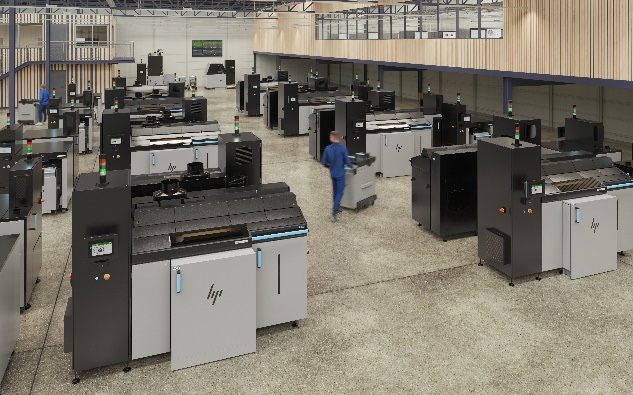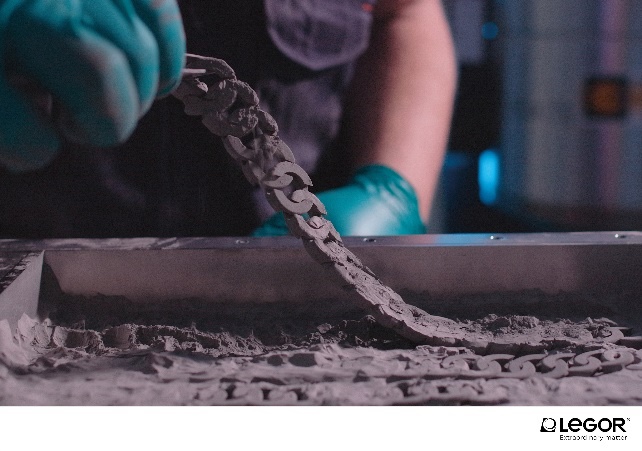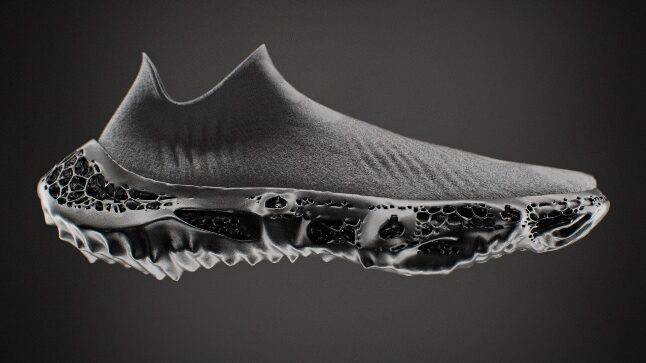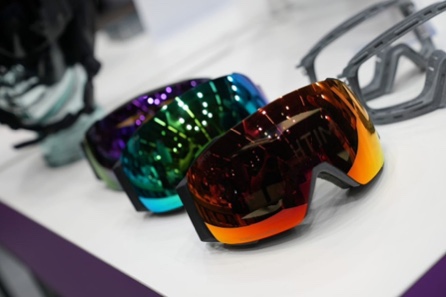Until 2023, the additive manufacturing (AM) sector largely seemed like a fragmented assortment of startups—however much inclination toward consolidation there may have been prior to this year, bubbling underneath the surface. If this still hasn’t changed in reality, the perception is certainly changing quickly for reasons that are obvious to anyone who pays attention to AM’s day-to-day activity.
Yet there has always been one company that hasn’t fit the overall mold, at least since 2015, when HP created its 3D printing division. It may be that, as 3D printing hits scale-up mode, HP becomes even more important to the sector’s unfolding trajectory. Given the pace at which this landscape is starting to evolve, now is the perfect time for an update on how HP views AM in its current form. Ramon Pastor, HP’s Global Head of Metals, Personalization & 3D Printing, shared his insights with me on that topic, as well as on 3D printing’s role in the company at-large.
HP’s progress in metals is an especially critical data-point to keep an eye on, as the company has been at the forefront of commercializing metal AM since it first announced it was entering the market segment in the fall of 2018. The launch of its metal binder jetting (MBJ) platform, the Metal Jet S100, was one of the most anticipated releases in the 3D printing industry prior to its hitting the market in the fall of 2022, making Pastor’s perspective on this subject uniquely valuable.

“After years of experiencing little change to metal fabrication processes, new metal 3D printing approaches are alleviating common pain points linked to traditional manufacturing methods via a scalable, labor-independent solution that provides cost-effective parts at high volume,” Pastor began. “For manufacturers, these technological advancements enable a shift to 3D printing metal parts for mass commercial use. More manufacturers across industries are bringing breakthrough applications to market as a result of ramping up investments in comprehensive and cost-effective solutions that meet customer demands quickly while breaking the boundaries of design innovation. In order to meet this increased demand and achieve the long-standing goal of delivering the best-in-class metal offerings for customers, HP has developed, and is constantly iterating its Metal Jet technology to best suit customer needs as they arise. By enhancing 3D metal software capabilities, for example, HP is uncovering new ways to help customers develop metal applications more quickly and easily than ever before in a new era marked by digitized manufacturing.”

The more that AM is taken seriously as a tool for production parts, the more that companies utilizing AM technologies will rely on informed experience, and thus on data, as one of the principal means for managing risk. HP’s almost unparalleled access to AM data — thanks to assets like the Digital Manufacturing Network — could make the critical difference for customers choosing among an increasing array of options for printed metal parts:
“The 3D printing solutions of tomorrow will be that much more capable of applying data and digital technologies so that the curtain lifts on part lifecycles and the needs of the user, enabling customers to print better parts with improved designs,” Pastor said. “Manufacturing processes will be streamlined with the ability to analyze and leverage insights in an accelerated and manageable way throughout the entire end-to-end lifecycle. Now, it’s HP’s job to make sure our customers are ready and empowered in this new era of 3D metals manufacturing.”
Of course, this is true not just about metal, but about polymer parts, as well. In fact, the data amassed here should play an even more immediate impact in shaping the commercialization of the AM sector over the next couple of years. Among other factors, the greater technical maturity of polymer parts is likely to lead to the expansion of 3D printed plastic applications for serial production sooner than is the case for metals.

In that regard, an area with particularly high potential for fast near-term growth is the commercial use of 3D printing for industrial decarbonization. As I wrote about recently, one market where HP is ahead of the curve on that front is in 3D printing the tooling for pulp fiber molds, which is already creating a real opportunity for reducing the carbon emissions associated with packaging. HP’s Sustainable Impact report highlights this as one of the big success stories of the company’s long-term net-zero goals.
“Our investment in the advancement and democratization of 3D printing technology will continue to power our sustainable impact journey,” Pastor explained. “Internally, our industry-leading Jet Fusion technology will help us meet ambitious sustainability goals, like eliminating 75% of our single-use plastic packaging (compared to 2018) by 2025 through our innovative fiber-based packaging solutions. Externally, we are motivated by the success stories of our partners and customers, who are leveraging the inherent flexibility and sustainability in design and logistics that 3D printing offers…Together, we are using 3D printing to unlock new design possibilities that would have been unthinkable and even impossible via traditional manufacturing methods, and our supply chains and manufacturing processes are becoming more streamlined and efficient as a result. Take for example our new recycling program with Arkema, which enables interested HP customers to sell used PA11 and PA12 powders and printed parts as opposed to disposing materials via costly, environmentally harmful practices such as landfilling or burning.”

As rising temperatures make it increasingly clear that climate change is not a future challenge but a present one, stakeholders across business and government have started to show willingness to embrace projects with more and more ambitious emission reduction goals. One of the keys to the success of those projects will be how effectively they can be mobilized at a moment’s notice. The most valuable technologies in this context will be those with a proven track record for being abruptly deployed into action in response to unexpected events: the technologies that have been developed and refined according to a gamut of contingencies.
“In the face of numerous global insecurities, from the climate crisis and the impending economic recession to supply chain issues, volatility is the new normal within the manufacturing industry,” Pastor said. “These external factors are putting pressure on existing manual supply chains as a result of significant shortages of skilled labor, drastic inventory challenges, limited geometric production capabilities, and general variation in assembly processes, all of which reduce productivity levels. These unforeseen external factors are difficult to overcome with traditional manufacturing methods, especially when paired with increasing consumer demands for innovative and customized products. As a result, businesses across a wide range of industries are seeking innovative solutions to old problems that traditional production tools and strategies fail to solve in this new and ever-changing environment.”
This is where Pastor made what is the strongest case for 3D printing, not just as a solution for general industry, but as a weapon in HP’s own manufacturing arsenal:
“This has created the perfect opportunity for innovative, adaptable, and flexible technologies like 3D printing to change the course of the manufacturing industry. As an intrinsically flexible manufacturing solution, brands both big and small across the industrial, medical, consumer, and automotive industries have already experienced firsthand a reduced reliance on manual labor, the ability to localize production and make tasks along the assembly line repeatable, thus improving product quality while reducing time to market when using 3D printing, all while combating the pain points associated with continuous volatility. In observing what this technology can help companies achieve, industry leaders like HP are developing add-on automation services that further improve [AM] scalability and output as operations along the entire production line become increasingly automated, improving efficiency of complex factory configurations while maintaining reduced levels of human intervention.”

Those are all advantages we can easily imagine HP drawing upon for use in its own massive supply chains. An especially important corporate strategic initiative for the company in recent years has been its pledge to manufacture higher proportions of the HP products in India that are sold in India. HP was the leader in the Indian PC market in 2022.
While Pastor didn’t mention any connection between HP’s 3D printing division and the company’s Make in India push, it seems notable that, in parallel to so many Western tech companies showing greater interest in India’s manufacturing sector, the world’s most populous nation is also accelerating its AM market. Relatedly, as I wrote about last October, AM service bureau Imaginarium became the first Indian member of HP’s Digital Manufacturing Network. As Pastor rightly notes, if you want to localize manufacturing to a specific market, AM is one of the ways to do it.
And, just as HP was quite early to the Indian market, its early adoption of 3D printing is part of the origins of what is starting to look like another broad trend amongst manufacturing giants: the incorporation of AM into production. In his conclusion of the interview, Pastor suggested that, as larger numbers of those corporate giants get on board with AM, they may simply feel most comfortable working with another established brand:
“HP has a rich legacy and strong roots in the printing space, which we’ve been able to leverage ever since introducing our Multi Jet Fusion solution back in 2016. Whether it’s major brands like Schneider Electric, John Deere or SMITH adopting our technology for end-use, high-volume production, or our strategic partnerships with service providers via HP’s growing Digital Manufacturing Network like Endeavor 3D, the 3D printing ecosystem knows they can trust us for our breadth and scale, knowledge and expertise in the field, organizational integrity, and strong leadership values. We firmly stand by the belief that bringing the additive ecosystem closer together through ongoing collaboration will allow us all to close the implementation gap while generating enthusiasm about the technology’s ability to complement rather than replace traditional manufacturing methods in industry 4.0, ultimately changing the way we think about designing, prototyping, and manufacturing goods.”
HP is equal parts a touchstone for how larger corporations are affecting the evolution of disruptive technologies, as well as for how those technologies are reciprocally affecting larger corporations. Keeping an eye on HP will continue to be vital for anyone who wants to understand both sides of that equation in the 3D printing industry.
Subscribe to Our Email Newsletter
Stay up-to-date on all the latest news from the 3D printing industry and receive information and offers from third party vendors.
Print Services
Upload your 3D Models and get them printed quickly and efficiently.
You May Also Like
Johns Hopkins University Researchers Develop HyFAM Technology
Two scientists from Johns Hopkins University, Nathan C. Brown and Jochen Mueller, have developed a hybrid manufacturing technology they call HyFam, or Hybrid Formative Additive Manufacturing. Their work on this technology...
3D Printing G-Code Gets an Upgrade: T-Code
Good old G-Code still manages many 3D printers, great and small. Just like the STL, it’s a standard that enables collaboration while also holding the additive manufacturing (AM) industry back....
AM Rewind: The Biggest News and Trends of 2024
After a sluggish 2023, driven by persistent inflation and geopolitical tensions, 2024 has seen some recovery. Economic growth climbed from about 2.8 percent in 2023 to a modest 3.2 percent...
Metal Wire 3D Printer OEM ValCUN Announces Plans for 2025 Expansion
ValCUN, a Belgian original equipment manufacturer (OEM) of wire-based metal additive manufacturing (AM) hardware, has announced that the company has entered the next phase of its growth trajectory, making key...

































